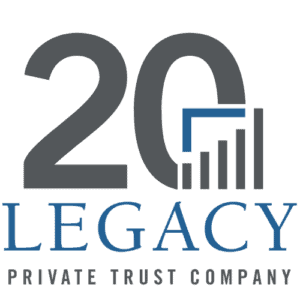For parents who have painstakingly accumulated substantial assets, such as a real estate portfolio, the challenge often lies in ensuring that their children manage their inheritances responsibly. This concern is particularly acute when an heir has shown a tendency towards financial imprudence or unfruitful entrepreneurial ventures. In such scenarios, a spendthrift trust becomes a crucial tool, offering a way to safeguard the legacy while promoting the financial well-being of the heirs.
The Challenge of Financial Responsibility in Heirs
Many heirs, endowed with ambition and a willingness to take risks, may lack the necessary financial acumen, leading to mismanagement of their inheritances. The dilemma for parents is supporting their children’s aspirations while protecting them from their less prudent financial tendencies.
Risks Associated with Direct Inheritance
The direct transfer of a significant inheritance can be risky. While it can offer financial security and growth opportunities, it can also lead to rapid depletion of wealth, especially if the beneficiary lacks financial literacy or exhibits a pattern of poor financial decisions.
Implementing a Spendthrift Trust
In the realm of estate planning, a spendthrift trust emerges as a sophisticated and effective tool for benefactors concerned about the financial prudence of their heirs. This trust structure is designed to provide benefactors with the peace of mind that their hard-earned wealth will be utilized in a manner that aligns with their long-term wishes and values.
A spendthrift trust is particularly advantageous in its flexibility. Benefactors have the autonomy to tailor the trust’s provisions to match the unique circumstances and needs of their beneficiary. For instance, disbursements from the trust can be linked to specific milestones such as completing education, reaching certain age milestones, or achieving professional goals. This approach encourages beneficiaries to pursue constructive paths, knowing that financial rewards are aligned with personal and professional development.
Additionally, the trust can be set up to provide funds under certain conditions that the trustee, often a trusted individual or a professional entity, deems appropriate. This could include provisions for basic living expenses, healthcare, education, or even start-up capital for business ventures that are vetted and deemed viable. The trustee’s role here is critical, as they balance the benefactor’s intentions with the realistic needs and circumstances of the beneficiary.
Benefits of a Spendthrift Trust
- Controlled Disbursements: One of the key features of a spendthrift trust is its ability to control the timing and amount of disbursements. This control mechanism is not just about withholding wealth, but rather, it’s about distributing it in a way that promotes responsibility and long-term security. By tying the disbursements to specific life events or achievements, the trust incentivizes positive behaviors and milestones. This method also allows the trustee to assess the beneficiary’s current situation and make informed decisions about the release of funds, ensuring that the distributions are both timely and beneficial.
- Protection from Creditors: A significant benefit of a spendthrift trust is the protection it offers from the beneficiary’s creditors. In the event that the beneficiary incurs debts or engages in financially risky ventures, the assets within the trust remain inaccessible to creditors. This feature is crucial in preserving the trust’s principal from potential financial mishaps of the beneficiary. It ensures that the inheritance serves its purpose as a long-term financial resource rather than a temporary fix to financial misjudgments.
- Preventing Rash Decisions: Another critical aspect of a spendthrift trust is its role in minimizing the risk of impulsive or high-risk financial behavior by the beneficiary. By restricting direct access to the trust’s principal, the trust helps inculcate a sense of financial discipline. It prevents the beneficiary from making large, ill-advised expenditures or investments, thereby protecting the trust’s assets from being rapidly depleted. This protective feature is especially valuable in cases where the beneficiary has a history of poor financial management or is susceptible to external influences that could lead to hasty financial decisions.
Choosing an Effective Trustee
The selection of a trustee is a critical decision. The ideal trustee should understand the family’s dynamics and financial objectives and have the skills to manage the trust assets and navigate sensitive familial relationships prudently.
Complementary Strategies
Beyond establishing a spendthrift trust, it’s essential to foster financial literacy and responsibility in heirs. Encouraging engagement with financial advisors or providing educational resources can empower them to make informed decisions and manage their finances effectively within and beyond the trust’s framework.
Balancing Protection with Empowerment
In summary, creating a spendthrift trust offers a balanced approach to managing concerns about an heir’s financial future. It ensures financial support while safeguarding the inheritance from potential mismanagement. Concurrently, supporting the heir’s financial education can enhance their ability to manage wealth responsibly. With the right structures and guidance, parents can ensure their legacy yields enduring benefits for their children.
If you are a Legacy client and have questions, please do not hesitate to contact your Legacy advisor. If you are not a Legacy client and are interested in learning more about our approach to personalized wealth management, please contact us at 920.967.5020 or connect@lptrust.com.
This newsletter is provided for informational purposes only.
It is not intended as legal, accounting, or financial planning advice.




